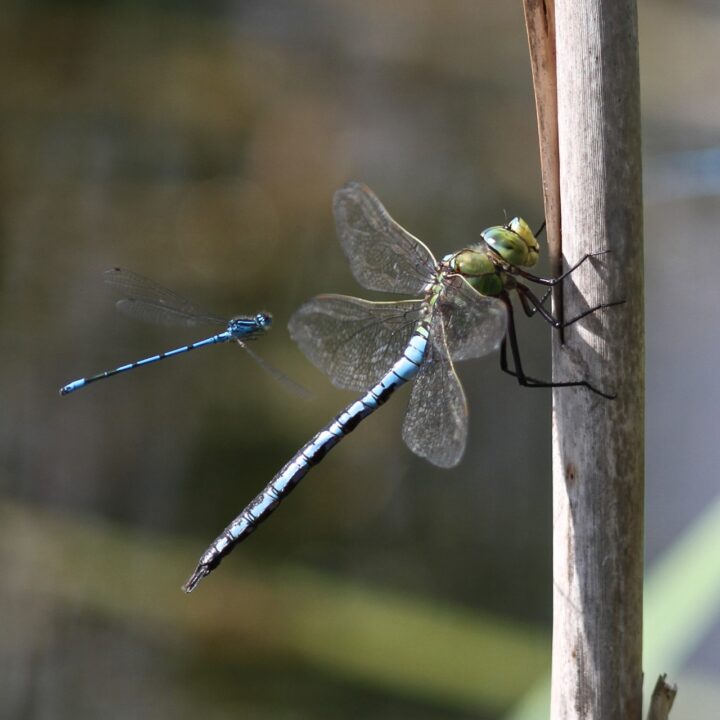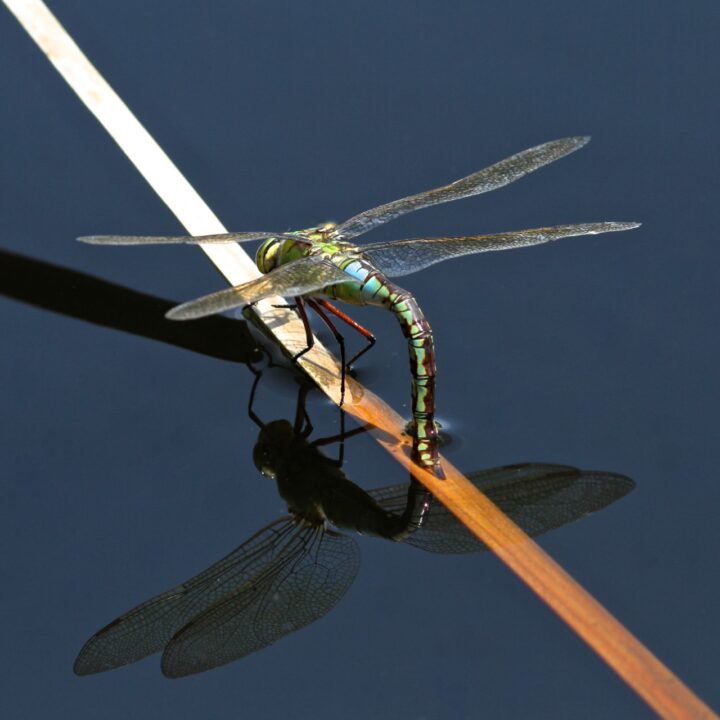(Anax imperator)
The largest of the insects at the reserve, the Emperor is an impressive dragonfly found at the reserve’s ponds.
Fast facts
- Common name(s)
- Emperor Dragonfly
- Scientific name
- Anax imperator
- Habitat
- Ponds
- Diet
- Insects
- When to see it
- May – October
Identification
The Emperor is known as ‘Britain’s bulkiest dragonfly’. This species is distinguished by its large size and bright blue and green colouration. Both sexes have an apple-green thorax and a central dark line down the abdomen. Males have blue abdomens while the females have green abdomens.
Its flight behaviour is also characteristic, hardly ever settling and with its abdomen drooping in flight.
Did you know?
The Emperor is one of 17 dragonfly and damselfly species found at Gosforth Nature Reserve.

Look out for a striking blue abdomen and green thorax
Ecology and behaviour
The Emperor is rarely found away from water, preferring large ponds that are well-vegetated with a variety of pondweeds. Males are very territorial, spending much of their time patrolling around the edge of waterbodies and chasing off intruders. Females are most likely to be seen egg-laying, typically laying their eggs into pondweed just below the water’s surface.
First recorded in the North East in 1980, the Emperor is a thinly distributed species across the eastern half of the region. It can tolerate brackish and alkaline water and its easterly regional distribution may be due to its intolerance of acidic water. Since 2000, this species has rapidly increased its range northwards and has recently appeared in Ireland.
The Emperor catches its insect prey on the wing though larger prey, such as other species of dragonfly, may be eaten at rest. The large larvae also feed on insects during their development.
45-56 mm
The length of Emperor dragonfly larvae
78 mm
The length of adult dragonflies
6 months
The flight period of Emperor dragonflies
At Gosforth Nature Reserve
Situated at the west and southwest of the reserve, the two large ponds are a hotspot for dragonflies and damselflies. Emperor males are most often found patrolling around the pond edge while females are easiest to see when egg-laying on vegetation. Look out for this species from early June onwards.
17 species of dragonfly and damselfly can be observed at the reserve. Find out more about Gosforth Nature Reserve’s early-season and late-season dragonflies and damselflies in two blog posts by monitoring volunteer, Chris Wren.

Female Emperors are harder to find and are easiest to see when ovipositing